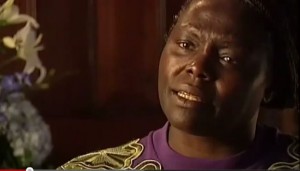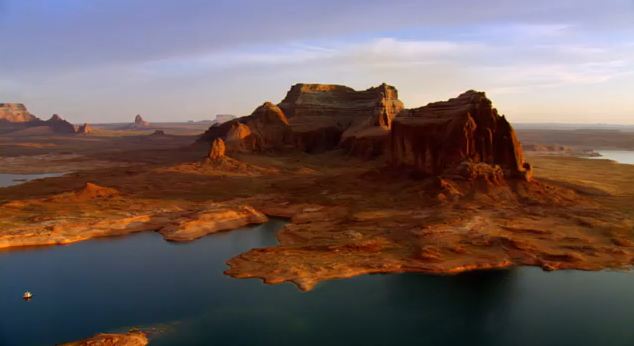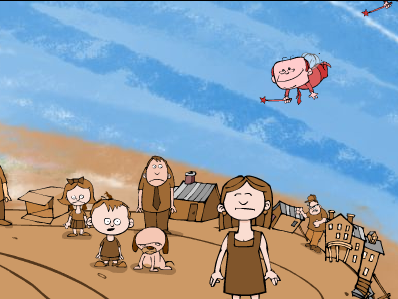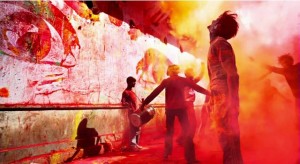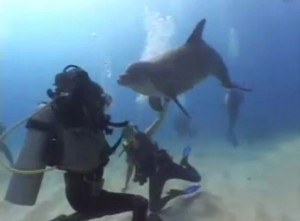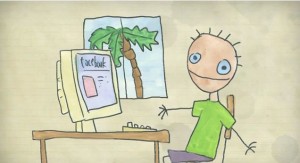Wangari Maathai – the Tree Lady of Africa leaves a legacy that will benefit millions.
Wangari Muta Maathai (1 April 1940 – 25 September 2011)
The Tree Lady of Africa
Kenya has declared two days of mourning in honour of Wangari Maathai, Africa’s first woman Nobel peace laureate, who died on Sunday of cancer. President Mwai Kibaki also announced that Maathai will be accorded a state funeral.
Messages of condolence have been pouring in from across the world in honour of this dynamic woman who inspired so many and was to become known as “the Tree Lady of Africa”.
Maathai was the driving force behind the pioneering Green Belt Movement that organised rural women in Kenya to plant trees, teaching them that not only would this combat deforestation and soil erosion but it would also help generate local income, education and resources.
Since 1977 more than 40 million trees have been planted.
Environmental and Political Activist
Environmental and political activist Wangari Maathai was born in Ihithe, a village in the Central Highlands of Kenya in 1940, where she began her education. She later studied as a boarder at the Mathari Catholic Mission in Nyeri, becoming fluent in English. Completing her education there with the highest grades in her class, she was granted admission to the only Catholic high school for girls in Kenya, Loreto Girls’ High School in Limuru.
Airlift Africa
She was one of about three hundred Kenyans chosen to study at American Universities, in September 1960 under a program funded by the then United States Senator, John F. Kennedy through the Joseph P. Kennedy Jr. Foundation. This initiative was to become known as the Kennedy Airlift or Airlift Africa.
She studied in the United States at Mount St. Scholastica and the University of Pittsburgh, where she first experienced environmental restoration as environmentalists in the city were pushing to end the city’s air pollution.
Having completed her studies in America, she returned to Kenya to a job as research assistant to a professor of zoology at University College of Nairobi.
She arrived to find her post had been given to somebody else, something she believes was because of gender and tribal bias.
After a job search of two months, Professor Reinhold Hofmann, from the University of Giessen in Germany, offered her a job as a research assistant in the micro anatomy section at University College of Nairobi.
In 1967, Hofmann encouraged her to study further in Germany, in pursuit of her doctorate. She studied both at the University of Giessen and the University of Munich
First East African Woman to Receive PH. D.
In 1971 when she was granted a Doctorate of Anatomy at the University College of Nairobe, she became the first East African woman to receive a Ph.D.
During the 70s she became involved in various civic organizations including the Kenya Red Cross Society, the Kenya Association of University Women, the Environment Liaison Centre and the National Council of Women of Kenya.
Through her experience with these various voluntary organizations she realized that the root of most of Kenya’s problems was environmental degradation.
The Green Belt Movement is Born
On June 5, Maathai led a procession of the National Council of Women in Kenya (NCWK) from Kenyatta International Conference Center in downtown Nairobe to Kamukunji Park on the outskirts of the city where they planted seven trees in honour of community leaders. This was the first “Green Belt” of what was to become the “Green Belt Movement”, an environmental non-governmental organization focused on the planting of trees, environmental conservation, and women’s rights.
2004: First Environmentalist to Win the Nobel Peace Prize
In 2004 she became the first African woman and the first environmentalist to win the to receive the Nobel Peace Prize for: “her contribution to sustainable development, democracy and peace.”
The Norwegian Nobel Committee announced:
“Maathai stood up courageously against the former oppressive regime in Kenya. Her unique forms of action have contributed to drawing attention to political oppression – nationally and internationally. She has served as inspiration for many in the fight for democratic rights and has especially encouraged women to better their situation.”
Home: Do You Know Where You Live?
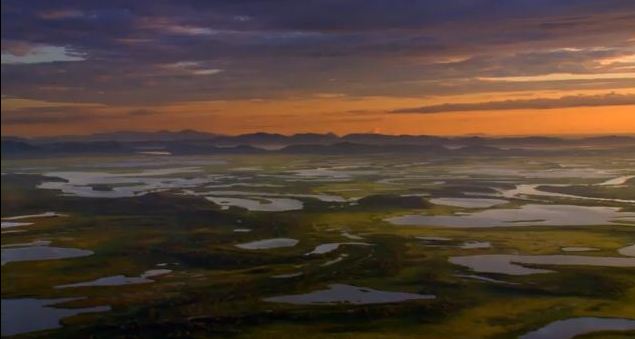 The first time I became aware of the unique project being undertaken by photographer Yann Arthus-Bertrand was when I unexpectedly stumbled across his “Earth from the Air” exhibition outside the Science Museum in London a few years ago.
The first time I became aware of the unique project being undertaken by photographer Yann Arthus-Bertrand was when I unexpectedly stumbled across his “Earth from the Air” exhibition outside the Science Museum in London a few years ago.
Like the other people walking between the giant photographs, I was quite awe-stuck by the experience.
The images were pin-sharp powerful unique statements, wondefully composed and in many cases looking for all the world like beautiful abstract paintings. There were some of the most beautiful landscapes I had ever seen, while other images could quite easily have been details of the human body seen through an electron microscope (like mother, like child?).
They were all aspects of the surface of the planet taken from the air.
The film is simply and appropriately called “Home”
It is one of the most important films ever released, and certainly one of the most visually impressive. The earth is given a voice in images, allowed to describe herself to us, simply by sharing some portraits of who she is. We are all children of the earth, this astoundingly beautiful being that deserves our love, respect and care.
This classic film that took so many years to create has been given as a gift to all the people of the planet by its creator, Yann Athus-Bertrand and with the support of its sponsors it has been released totally free to the public.
It is free – you are encouraged to share it, and the organisation will even help you to arrange public screenings of it, because the message it carries is so important.
It is yours – watch it, and then share it with someone else.
Home, a film by Yann Arthus-Bertrand – click the link to view it
A Message from the Photographer
“We are living in exceptional times. Scientists tell us that we have 10 years to change the way we live, avert the depletion of natural resources and the catastrophic evolution of the Earth’s climate.
The stakes are high for us and our children. Everyone should take part in the effort, and HOME has been conceived to take a message of mobilization out to every human being.
For this purpose, HOME needs to be free. A patron, the PPR Group, made this possible. EuropaCorp, the distributor, also pledged not to make any profit because Home is a non-profit film.
HOME has been made for you : share it! And act for the planet.”
Yann Arthus-Bertrand, GoodPlanet Fundation President
Read MoreMark Fiore: Trickle Down Tales
Mark Fiore is an American political cartoonist specialing in Flash-animated political cartoons for which the Wall Street Journal recently called him the “undisputed guru of the form”. His cartoons have appeared in many American papers and a number of websites.
After studying political science at Colorado College, he started his professional life by drawing political cartoons for newspapers ranging from the Washington Post to the Los Angeles Times. In the 1990s he began to experiment with animating his political cartoons and in 2001 he left newspapers for animated online cartoons. In 2010 he won a Pulitzer Prize, the first ever for his genre of editorial cartoons.
He is a member of the Association of American Editorial Cartoonists. Fiore’s comics were included in Ted Rall’s Attitude 3: The New Subversive Online Cartoonists, along with other web-comics such as Dinosaur Comics, Diesel Sweeties, Fetus-X, and The Perry Bible Fellowship. In their review of Attitude 3, the American Library Association’s Booklist called Fiore’s cartoons a standout for their “unique and personal” vision
His work can be seen on his website wwww.markfiore.com/
On his website you can comment on individual comics, or leave a verbal opinion in the Shout Back!” section of the site, or find ideas for things you can do about individual issues ion the “Do Something!” page.
Read MoreCan Art Change the World?
Parisian photographer and street artist “JR” has undertaken many projects that have spanned the planet, using giant billboard sized monochromatic photographs in unexpected places, in positions of high visibility.
He started out as a graffiti artist in Paris, but after finding a camera on the Metro, began taking photographs documenting his friends painting graffiti on the rooftops and walls of the city..
He now mixes the two mediums of photography and graffiti, calling himself a “photograffeur”, posting giant black and white photographs in public places.
The Largest Illegal Photo Exhibition in the World
His “Face 2 Face” project was dubbed “the largest illegal photo exhibition in the world” in which the border wall which runs the length of the disputed area between Israel and Palestine became a gallery of giant portraits of Jews and Palestinians of all denominations and types, grinning and pulling faces into the camera and posted side by side along large stretches of the wall.
Part of this is a giant triptych of a rabbi, a priest and an immam wearing intentionally comic expressions. The message is simple but powerful: there is far more that unites humanity than that which divides it. “It’s about breaking down barriers,” JR says. “With humour, there is life.”
Women are Heroes
His more recent “Women are Heroes” project took him to meet, work with and photograph women in slums and war-torn, poverty stricken communities across the world, using art as a medium to reaffirm the positive, creative side of humanity.
“They keep on asking you: what is the purpose of your project? Are you an NGO? are you the media? … Art. Just an artist…
Some who understood the project will explain it to others: to a man who did not understand I heard someone said:
“You know, You’ve been here for a few hours trying to understand this thing with your fellows. During that time, you haven’t think about what you’re going to eat tomorrow. This is art.”
“Women are Heroes” created a new dynamic in each of the communities and the women kept that dynamic after we left. For example, we created book, not for sale, but that all the community would get but to get it they would have to make it signed by one of the women…
Its really important point to me is that I don’t use any brands or corporate sponsor, so I have no responsibility to anyone but myself and the sisters…
They made me promise… please, make our story travel with you…so I did…look… that’s Paris, that’s Rio… that’s London… New York…”
Turn the World Inside Out – Participate in a Global Project
His latest project is one that everyone can participate in:
“I wish for you to stand up for what you care about by participating in a global art project, and together we’ll turn the world.. INSIDE OUT.
When we act together, the whole thing is more than the sum of the parts.
So I hope that together we will create something that the world will remember, and this starts right now, and depends on you.”
Use the link below to find out how you can participate.
Read MoreThe World’s Saddest Dolphins
Report by ACRES – Animal Concerns Research and Education Society
Dolphins don’t express emotions with their facial muscles.
Their mouth is just shaped in a way that we humans misinterpret as a smile. So even when a dolphin is suffering from high stress, visitors to marine parks often come away thinking that the dolphin is having a good time.
This is usually far from the truth.
27 dolphins were captured from the Solomon Islands in the Pacific Ocean. Some were transported to Langkawi.While others were kept in Subic bay, Philippines.
When two of the dolphins in Langkawi died, Resorts World moved them all to the Philippines.
Above: Diving among free dolphins
Free Dolphins Roam Thousands of Kilometers Together
They are sensitive mammals capable of great emotion and feeling and intelligence. In the wild, they roam thousands of kilometers of ocean together. They are used to exploring three-dimensional underwater worlds full of sounds, sights, movement, colour, varying landscapes and changing currents.
Proud, Intelligent Creatures Begging for Dead Fish
Their world has already shrunk to a square sea pen, devoid of variety, bereft of sea life. They can’t hunt anymore. They beg and jump for handouts of dead fish, which arrive in buckets. There’s nowhere for them to roam, except back and forth. And nothing to do except turn round and round and go slowly mad.
For more information, see the Save the World’s Saddest Dolphins website by local group ACRES (Animal Concerns Research and Education Society):http://www.saddestdolphins.com/
We also appealed to Singaporeans to support this cause and do their bit to persuade RWS to free the dolphins.
Please note: ***You can also change the wording on the letter and put your own thoughts in the letter.***
FaceBook: Unfriend Coal
Facebook announced in February 2010 that it was building a massive new data centre in Oregon, USA. Claiming to be using the latest energy efficient computers.
It did not mention that it would be powering the beast with the dirtiest of all energy: coal.
GreenPeace is running a campaign to try to make them realise what a bad choice that is. Their campaign: Facebook: Unfriend Coal asks Facebook to:
- Increase the use of clean energy to make Facebook coal free Develop a plan to make Facebook coal free by 2021
- Educate your users about how Facebook powers its services and its carbon footprint
- Advocate for clean energy at a local, national and international level
“Basically, we are campaigning to get Facebook to drop coal and commit to 100 percent renewable energy, cutting its carbon footprint and helping in the struggle to prevent catastrophic climate change.”


